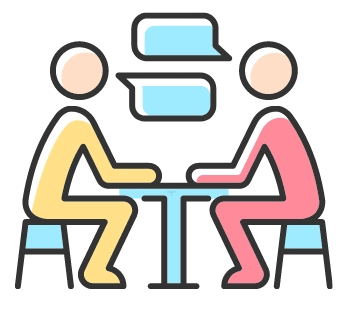As a leader in today’s rapidly changing world, you know that a dynamic and engaging organizational culture is more important than ever. You need to be able to adapt quickly to the ever-changing needs of your employees, customers, and partners. But how can you create a culture that is both dynamic and engaging?
The answer, of course, is the Dynamic Culture Leadership Model. This business paradigm provides the direction, organization, and communication strategies needed to keep your company moving forward in today’s constantly changing environment. The model is based on the laws of nature, so it is adaptable and responsive to the needs of your business.
Contents
So, What is the Dynamic Leadership Model?

The dynamic culture leadership model is a model that stresses the importance of change and adaptation to achieve success. This model is best suited for organizations that are in a state of flux or are undergoing significant changes.
This model aims to create a culture in which employees are willing and able to adapt to change quickly and effectively. This type of leadership model is very goodly reactive in nature. Goodly? A good reaction!
When needed, this helps improve team motivation, as dynamic leaders are characterized by effective action, focused energy, and benevolent compassion. They focus on engaging with employees in such a way that success is not based on any one individual but on the entire team. This helps to motivate teams, as they experience a sense of recognition of their contribution to the overall success.
For example, a company’s CEO might be willing to change the company’s direction to stay competitive or merge two companies successfully. Alternatively, a manager might need dynamic leadership skills to motivate employees while steering the company’s direction; their culture needs to be integrated and merged as well.
In either case, the dynamic culture leadership model is adaptable and can help a leader navigate difficult situations.
Cross Culture Teams and the Need for Dynamic Culture Leadership Model for Business Success

The dynamic leadership model is also beneficial for cross-culture teams. In a globalized business environment, it is more important than ever to be able to work effectively with people from different cultures. This transformational leadership helps diverse teams to understand and appreciate the differences between cultures. It also enables such leaders to adapt their leadership style to the needs of their team members.
For example, a dynamic leader might need to be more task-oriented when working with a team from a culture that is very results-focused. Or, a dynamic leader might need to be more people-oriented when working with a team from a culture that is very relationship-focused.
The need for it varies from company to company; the crucial part is understanding its importance for future orientation. With Employment going down, Pandemics rising, and then the war-dance of Ukraine-Russia & China Taiwan. It’s clear that we cannot just rely on one kind of culture. We must respect every culture and create a diverse and dynamic environment where everyone feels safe.
Cross-Cultural Leadership skills are more helpful for business success than ever with the increase in international business opportunities and the globalization of organizations. Many countries with successful international executives are now working with cross-cultural leaders to take advantage of these opportunities.
Benefits of Dynamic Culture Leadership Model

There are many benefits to implementing the dynamic model in your organizational leadership.
Some benefits of this dynamic cross-cultural leadership style include:
- The dynamic culture leadership model is effective in that it can be adapted to different situations and team members. This allows for a more fluid leadership style, improving team motivation.
- A cross-cultural leader can focus on the team as a whole rather than any individual. This helps to build team cohesion and recognize the contribution of all team members.
- A dynamic leadership team can engage employees in a way that empowers them to take action and be proactive. This helps to motivate employees and improve productivity.
- Dynamic leaders can find opportunities in obstacles and take effective action. This helps teams be more resilient and adaptable in facing challenges.
- The dynamic culture leadership styles encourage innovation and creativity, as teams can explore new ideas and solutions.
- This global leadership model fosters a sense of respect and trust among team members. This creates a positive working environment quickly and contributes to team success.
- The dynamic culture leadership model helps build relationships among team members, leading to better communication and collaboration.
- The dynamic culture leadership model encourages team members to take risks and be more innovative. This can lead to improved problem-solving skills and creativity.
- The dynamic culture leadership model helps teams to be more flexible and adaptive, which can be beneficial in today’s rapidly changing workplace.
- The DCL model is beneficial because it encourages senior leaders to be positive role models for their team members. This helps teams to develop a strong work ethic and aspire to achieve their goals.
- The dynamic culture leadership model is beneficial because it encourages leaders to be patient with their team members. This helps teams to learn from their mistakes and grow as individuals.
- The dynamic culture leadership model is based on the belief that there is no one right way to lead a team. This creates a malleable leadership style that can be adapted to fit the needs of each individual group.
The Dynamic Culture Leadership Model has 4 Fundamental Elements:
The dynamic leadership model consists of four key dynamics: vision, interpersonal skills, decisiveness, and flexibility.
A Clear Vision

This is the first and most crucial component of the dynamic leadership model. An active leader needs to have a clear vision for the team in order to be effective. This vision should be something that everyone on the team shares, and it should be something that inspires them to work together towards a common goal. A clear vision provides a roadmap for the team and helps keep them focused on what they are trying to achieve. It also helps to motivate them, as they can see how their individual contributions are helping to achieve the team’s goal.
I remember one time when I was working on a project with a team of people. We were all working towards a common goal, but we were having trouble getting started. Our leader took the time to sit with us and explain the vision for the project. He then asked us each what we thought our role should be in achieving that vision. After we all had a chance to share our ideas, we were all motivated to start. We knew what we needed to do and were excited about doing it. That project was a success, thanks in part to our dynamic leader, who had a clear vision for us.
Interpersonal Skills

The second element of the cross-leadership model is interpersonal skills. This means that they can react to different situations and team members in an effective way.
For example, if one team member is shy and quiet, the dynamic leader will adjust their approach to get the most out of that individual. They may need to be more directive and provide more explicit instructions, whereas they may need to be less directive with someone who is more outspoken and takes the initiative. Additionally, dynamic leaders can read people and understand their motivations. This helps them to better engage with employees and get the most out of them. For example, if an employee is motivated by recognition, the dynamic leader will give them recognition for their work. Alternatively, if an employee is motivated by challenge, a good leader will provide them with challenging tasks to complete.
It helps to minimize cross-cultural issues in a global community where there is a mix of underlying beliefs and people’s underlying assumptions that cannot be challenged.
The ability to adjust your leadership style to fit the needs of each individual team member is a critical skill for dynamic leaders. It allows them to get the most out of their team and helps to create an environment where everyone can succeed.
Decisiveness

One of the core values of the dynamic leadership model is decisiveness. This means that dynamic leaders are able to make decisions quickly and efficiently. They don’t second-guess themselves or allow indecision to stall progress. Instead, they trust their instincts and make decisions that they believe are in the team’s best interest.
Being decisive doesn’t mean that you never make mistakes. It just means that when you do make a decision, you stick with it and don’t allow yourself to be swayed by others. Dynamic leaders are confident in their abilities, and they know that they can always course-correct if necessary.
This dynamic is particularly important in fast-paced environments where decisions need to be made quickly. It’s also essential when leading remote teams, as there may be times when you need to decide without being able to consult with your team first. In these situations, it’s important to have the confidence to trust your instincts and make the best decision possible.
Flexibility

The fourth and final dynamic of the DLM is flexibility. A dynamic leader needs to be able to adapt to the changing needs of the team or customer. This flexibility helps to improve team motivation, as the leader can react quickly to changes in the situation and adjust the approach as needed.
For example, if a team is struggling to meet a deadline, an active leader would be able to change the approach and provide more support to help the team succeed. This type of flexibility allows teams to feel that they are being led in a way that meets their specific needs, improving motivation and productivity.
Flexibility doesn’t just end with team or customers; sometimes, the budget gets tight, and a dynamic leader would need to be able to reevaluate and find other ways to get the job done.
Being flexible as a leader can be challenging, as it requires you to be constantly adaptable and open to change. However, it’s a critical skill to understand leaders who want to be successful in today’s ever-changing business environment.
How to Implement Dynamic Culture Leadership Online Work

When it comes to online work, call it hybrid or remote. Implementing Dynamic Culture Leadership becomes confusing. You may start doubting the entire idea, thinking it’s only meant for in-person leadership. That’s where you go wrong.
The four elements of dynamic leadership still apply: clear vision, interpersonal skills, decisiveness, and flexibility.
The key is understanding how these dynamics play out in the online space and then adjusting accordingly.
Let’s look at each dynamic and see how it can be applied to leading remote teams.
With a clear vision, for example, you may need to communicate it more effectively than you would in person. When companies merge or undergo significant change, there is often a lot of miscommunication. By taking the time to update everyone individually, you’re setting yourself up for failure. In the online space, you gather everyone and communicate vision via zoom, youtube video, or presentation. Many collaboration tools have announcement and broadcast features that can help you get the word out quickly and effectively.
Similarly, with interpersonal and communication skills, it’s important to remember that remote team members can’t always see body language or facial expressions. Though, Interpersonal skills are still necessary when leading remotely because of cultural diversity. You need to be able to build relationships with team members, even if you’re not in the same room. This means being patient, understanding, and supportive. Listening is also crucial – you can’t just talk to people and expect them to listen. Make sure you give team members time to speak and pay extra attention to tone and communication style. Avoid distractions when talking to someone, such as checking your phone or email. Keeping track of chats, exchanges, and problems with CRM tools can help to build rapport and trust with team members.
Decisiveness is another dynamic that’s still important when leading remotely. In fact, it may be even more critical. You can’t afford to waver on decisions or take too long to make them with remote teams. This will only lead to frustration and confusion. When leading remotely, you need to be able to make quick decisions and then communicate them clearly to your team. With Project Management Tools, you get the power of assigning and tracking the progress of tasks, who is performing, and where the projects are headed—giving you enough data to make the correct decisions.
Finally, flexibility. Things change quickly in the online world, and you need to be able to adapt accordingly. This means being open to new ideas, trying new things, and being willing to change course if something isn’t working. For example, if you’re using a particular collaboration tool and it’s not working well, don’t be afraid to switch to something else. The same goes for processes and methods – if something isn’t working, don’t be afraid to change it.
Dynamic culture leadership is still possible – and necessary – in the online space to ensure diversity. Understanding the dynamics at play and making adjustments accordingly can lead your team to success.
Conclusion
If you’re looking to integrate a new culture into your business successfully, it’s essential to understand the dynamics at play. By implementing dynamic culture leadership, you can ensure that everyone is on the same page and headed in the same direction.
To learn more about how to successfully merge other cultures, be sure to check out our latest blog post – How to Merge Cultures When Acquiring a Business.
Do you want to learn more about dynamic culture leadership and how to implement it in your business? Tweet Me or Comment Below


